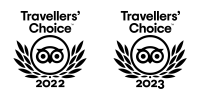Tibet FAQs
General Info
Since Tibet is a special autonomous region of China, it is difficult as other provinces in mainland China to travel.
To travel to Tibet, you must get your China visa and then you must go through an experienced, reliable travel agency and need to book your trip. Then the travel agency will help to arrange your Tibet entry and road permits. Without Tibet entry and road permits, you can not board the flight or train so it means you can not travel to Tibet without Tibet entry and road permits.
To travel to Tibet, you must be in good shape physically and if you are older ages and taking a trip to Mt. Everest or Mt. Kailash area, we recommend you to see your doctor before you visit Tibet and make sure that your body fits to the high altitude.
Facility of Tibet Trip:
Tibet has also been developed very much and many hotels even including ST Regis and Shangrila are operated in Lhasa, there are many 4*, 3*, Boutique hotels in Lhasa, Gyantse, Shigatse, Tsetang, Nyingtri and many good guesthouses on the way to Mt. Everest, and guest houses throughout route to Mt. Kailash, many good English-speaking guides, and good French-speaking guides, German, Spanish, Japanese-speaking guides and lots of Chinese-speaking guides. They have also improved the tourist transportation as a lot nowadays. There are many new buses including coasters, Yutong buses, Toyota Landcruiser, Mitsubishi 4*4 jeeps, Hyundai Minivans, Transit vans, etc.
The road condition to all over tourist destinations has also improved with paved roads nowadays, including the road to Mt. Kailash and Mt. Everest.
There are many restaurants in the cities like Lhasa, Gyantse, Tsetang, Shigatse, etc who serve continental food and there are many restaurants who serve local Tibetan food. You can also get fresh coffee nowadays in Lhasa, Gyantse, Shigatse, Tsetang, etc.
You can also find many souvenirs shops in Lhasa, especially around the Bharkor street so you can get different gifts for your friends, or families.
Tibet travel permits
It is difficult for a tourist from outside the world to know all the details about the Tibet Trip, what you need, whom you contact, which program needs more special permits, etc.
The rules and regulations are changing often here regarding the matter of the permit. The most recent information about Tibet entry and road permits is that we can get your usual Tibet entry and road permits within a week as earliest and two weeks for special permits like Mt. Kailash, Guge Kingdom, Lhamo Lhatso, Nyingtri region permits. Why these permits are called special permits is because those places are considered as trans-Tibet travel and restricted area so we will have to get many kinds of permits for those places, not only the permits from Tibet Tourism Bureau but also many other departments so it takes much longer and called special permits.
When you visit Tibet, it is very important to tell our trip consultant from the very beginning where you would like to travel and which monuments, monasteries, scenic spots you would like to visit because we will have to include all those things in our permits and all the names of the visiting sites should be written in the permits to make sure that you can travel as you planned otherwise if you don’t tell our consultant all the places names that you like to visit when you book your trip and miss some places names in your permits, then you won’t be able to visit so it is very important to confirm everything from the beginning.
General FAQs
Why visit Tibet?
Admire its rich natural attractions of the world’s highest snow-capped mountains, including Mt. Everest, Joyu, Shisha Pangma, holy Mt. Kailash, Mount Everest, and many beautiful holy lakes, including Namtso Lake, Yamdrok Turquoise lake, Mansarovar lake, Kokonor lake, etc. Besides, lots of cultural scenic sights including the Potala Palace, Jokhang temple which is listed into the world’s heritage sites, many big monasteries including Drepung, Sera, Ganden, Tashi Lhunpo, etc.
Even though Tibet is huge and wide plateau land, you can visit of 10 days and include the most must-visit places, flying to Lhasa from either Kathmandu Nepal or mainland China cities such as Chengdu, Beijing, Shanghai, Kunming, Chongqing, Guangzhou, Xian or taking train from Beijing, Xining, Xian, Chengdu, Guangzhou, Shanghai to Lhasa, visit holy Lhasa including the Potala Palace, Jokhang temple which are listed in the world’s heritage sites, Drepung and Sera monasteries, the world’s biggest monastic schools, Yamdrok Lake, Gyantse, the old trade town of Tibet, Shigatse, Tashi Lhunpo Monastery, the seat of the Panchen Lama who is the second-highest leveled Lama of Tibet, Mt. Everest, the world’s most famous highest snow mountain.
What is the best time to travel to Tibet?
Fall/Spring
September-October/March-May: As Tibetan tourism is opening back up during this time of year; fall and spring are two of the busier seasons for Tibet travel. Ideally, these two seasons work best for trekking through the Tibetan mountainside. The weather is warm, and the skies are considerably clear. You can expect some wind and little amounts of rain as the ice from the winter has melted, therefore unblocking routes that were once impassible weeks before during the winter months.
Winter
November-February: During these months, you can expect cooler temperatures, cool winds, and snow. Even though the sun is still shining, it is still considerably cold during these months. During the winter, Tibet experiences 5-6 months of frost, creating less than ideal conditions for trekking. Visiting lower elevations like Lhasa, Gyantse, Shigatse, and Nyingtri may be your best bet during these months as fewer tourists will be around and the temperature is more moderate there during this time.
Summer
June-August: Because Tibet is a high altitude plateau, you can still expect some snow to fall only in the mountains at high altitude. However, summer is the best time for trekking in some places as the weather is warm-cool and the oxygen content in the air is higher during the summer than most other seasons. Light rain and cool conditions make for a beautiful green landscape ideal for trekking.
How to get to Tibet from Nepal or mainland China? By flight or train or by overland?
There are two main ways to get to Tibet, one is the international get way to Tibet which is fly from Kathmandu to Lhasa or overland from Kyirong border to Lhasa. Lhasa is the capital city of Tibet. Another way to get to Tibet is by train or flight from different cities in mainland China such as Peking, Xian, Xining, Lanzhou, Shanghai, Guangzhou, Chongqing, Chengdu.
What documents do you need before you travel to Tibet?
As usual, you need a valid passport, with 6 months' validity when you are traveling to Tibet.
You need a China visa and Tibet (entry) and road permits for traveling to Tibet. There are two ways to get Tibet visa which depends on where you are entering Tibet from.
If you fly from your home country to one city in mainland China, then you should apply your visa to the Chinese embassy in your own country and get the visa 20 days before your departure and send both the passport and China visa copies to your travel agent.
If you are entering Tibet from Kathmandu Nepal, you need to send a valid passport copy to us and we will get your visa from the Chinese embassy.
Can I join a small group tour?
In the one hand, it is not very easy to arrange a Tibet trip but if you book your trip with us in advance, you can join group tours no matter whether you fly from Europe to Lhasa via Nepal or fly from Europe to Lhasa via any kinds of mainland China cities. We will arrange your Tibet entry permits separately and send it to you in your first night hotel or even to the airport in mainland China by our representative.
Am I physically qualified to take a trip to Tibet?
Many people ask many questions about whether he or she can go to Tibet because of his or her age, his or her stomachache, high blood pressure, etc. Everybody below 80 years old is qualified to travel to Tibet and you can choose all the trips on our website according to your age. It is always very important to give the right information about your age when you inquire about your Tibet trip to our travel expert. However, we always recommend you check with your doctor before you travel to Tibet or it is also important to tell our trip consultant the fact of your health condition so that our trip consultant will advise you what kind of trip you can take according to your health condition.
- Some examples that the following persons cannot go to Tibet, or should be very careful if insist on going to Tibet:
- Have already caught a terrible cold and severe fever
- Have pneumonia or tuberculosis or have the history of these kinds of diseases
- Have a severe heart-attack risk or high blood pressure
- Those who are above 80 years old
When do I make the final payment?
You must do the final payment before the start of the trek. You can do a full payment at the time of booking or as late as after arriving in Kathmandu.
What happens if I have to cancel or postpone my booked trip?
On cancellation, depending on time duration before the cancellation of the trip, we will charge the cancellation charge. A trip can be postponed only up to 6 months at maximum and no further than that.
How far in advance can I book?
A trip can be booked as far as six months in advance. We do not book over six months ahead because of the possibility of huge fluctuations in the international exchange rate.
Can I customize trips to make them suit me?
We always try to be flexible on our trips for our client’s convenience. We are open to changes on the trips as long as the proposed itinerary does not harm your chances of acclimatization on the trips.
What insurances do I need?
Proper travel insurance is necessary before confirming a trek. In emergency cases, like evacuation, it will cover your expenses. Consult with your insurance company about the coverage of the insurance that you have bought.
How long will be an average day on the trek?
On average, a day on a trek would be 5-6 hours long. The longest day can be up to 10 hours and 3 hours is the shortest day. It all depends on the region you are trekking.
How safe are the treks?
Our main aim is your safety. We never compromise the safety of your travelers, all our guides are properly trained and equipped to take care client’s safety in even the wildest region of the country.
How are the food and the logistics on the trek?
All the lodges used on the treks are frequently used and trusted by our company. We take our clients to review seriously and repeat no lodges with complaints on their food.
How is the standard of the lodges we use on treks?
Most of the lodges in the mountains are basic. On a few major towns or settlements, when possible, we provide the best lodges possible. There are luxury lodges, but it’s not included in the standard treks.
How much luggage is allowed on treks?
The luggage must not exceed 20 kilos. A trekking helper carries baggage of less than 15 kilos. You receive this bag at the end of each day’s trek and carry the rest of the weight as a day bag with all your money and valuables inside it.
Health tips in Tibet for Travelers
- We recommend wearing a warm sweater, long pants, and a coat while traveling in Tibet as the weather in Tibet changes often day by day.
- Travelers can wash their hair, face, and feet, but not to take a shower on the first day of arrival in Tibet since the temperature in Tibet changes often.
- We recommend Travelers to choose food with less oil and chili. The weather in Tibet is hot in the day because of closer towards the sun, so oily food makes dizziness and ruins the trip.
- Doing light exercise before ten days of arrival to Tibet for Travelers planning on a trek in Tibet.
Altitude sickness by Tibet Travel Advisor
About Acute Mountain Sickness (AMS), it normally a slight reaction taking place more or less especially for travelers who come to Tibet for the first time. AMS represents the body’s intolerance of the hypoxic (low oxygen) environment at one’s current elevation. The typical symptoms would appear on the facets like headache, dizzy, feels off to be disgusted, vomit, etc, but if only do you follow the instructions from our tour guide and everything should be okay. And the major cause of AMS is going too high too fast. Given time, your body can adapt to the decrease in oxygen molecules at a specific altitude. This process is known as acclimatization and takes 1-2 days at that altitude. And when acclimatization lags ascent, various symptoms occur. To prevent the Altitude Illness, the most important thing is you can’t over-exert yourself or move higher for the first 24 hours and you’d better not take any activities for the first day in Tibet. Normally you will regain normal sense on the second day upon your arrival.
There’re also some other tips to avoid AMS:
- Do exercises to keep you fit before coming to Tibet.
- Avoid catching a cold before your entry to Tibet.
- Make sure you have a good sleep the night before you flying to Lhasa.
- After getting off your airplane in the airport, amble, take some deep breath. Do nothing severely.
- Ascend to higher altitude gradually. DO NOT ASCEND ANY HIGHER if you feel bad.
- Prepare some AMS pills according to your doctor’s suggestion.
Medicine to bring
Following is a list of items you should include in your medical kit–consult your pharmacist for brands available in your country.
- Aspirin or paracetamol-for pain or fever
- Antihistamine–for allergies, e.g. hay fever; to ease the itch from insect bites or stings, and to prevent motion sickness.
- Antibiotics consider including these if you’re traveling well off the beaten track, see your doctor, as they must prescribe medicines, and carry the prescription with you.
- Loperamide or diphenoxylate ‘blockers’ for diarrhea’ Prochlorperazine or metoclopramide for nausea and vomiting.
- Rehydration mixture to prevent dehydration, eg due to severe diarrhea; particularly important when traveling with children.
- Insect repellent, sunscreen, lip balm, and eye drops.
- Calamine lotion, sting relief spray or aloe vera-to ease irritation from sunburn and insect bites or stings.
- Antifungal cream or powder–for fungal skin infections and thrush.
- Antiseptic, such as povidone-iodine for cuts and grazes.
- Bandages, band-aids or plasters and other would dressings.
- Scissors, tweezers and a thermometer (note that mercury thermometers are prohibited by airlines)
- Syringes and needles in case you need injections in a country with medical hygiene problems. Ask your doctor for a note explaining why you have them.
- Cold and Flu tablets, throat lozenges and nasal decongestant.
- Multi-vitamines–consider for long trips, when dietary vitamin intake may be inadequate.
Acclimatization
The major cause of altitude illnesses is going too high too fast. Given time, your body can adapt to the decrease in oxygen molecules at a specific altitude. This process takes 1-3 days at that altitude. Prevention of altitude sickness falls into two categories, proper acclimatization, and preventive medications. Below are a few basic guidelines for proper acclimatization.
The most important thing is that you should never be nervous or worried about your trip. Regard the trip to Tibet like a trip to any other city. You should always be optimistic.
- Keep in mind that different people will acclimatize at different rates.
- Take it easy; don’t over-exert yourself when you first get up to altitude. Light activity during the day is better than sleeping because respiration decreases during sleep, exacerbating the symptoms.
- Do not over-exert yourself or move higher for the first 24 hours
- The acclimatization process is inhibited by dehydration, over-exertion, and alcohol and other depressant drugs.
- Avoid tobacco and alcohol and other depressant drugs including barbiturates, tranquilizers, and sleeping pills. These depressants further decrease the respiratory drive during sleep, resulting in a worsening of the symptoms.
- If you show symptoms of moderate altitude illness, don’t go higher until symptoms decrease (Don’t go until symptoms go down).
- If symptoms increase, go down, down, down!
- Stay properly hydrated. Acclimatization is often accompanied by fluid loss, so you need to drink lots of fluids to remain properly hydrated (at least 3-4 quarts per day).
- Eat a high-carbohydrate diet (over 70% of your calories from carbohydrates) while at altitude.
- Turn to your doctor for more professional advice, especially for the visitors having a record of heart, lung, other organ problems or anemia, the altitude in Lhasa is 3650m around
Mountain Sun Valley Treks & Expeditions offer multiple choices on adventure holidays that includes Trekking in Nepal, Kailash Mansarovar Yatra from Nepal, Everest Base Camp Trekking, Annapurna Trek, Langtang Trek, Manaslu Trek, Best Trek in Nepal, Trekking to Annapurna Base Camp, as well as Peak Climbing in Nepal. We help our clients in providing the essentials for mountaineering, trekking permit as well Nepal Visa.








